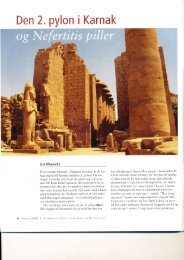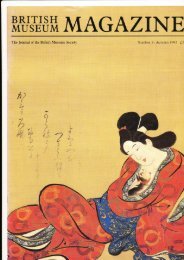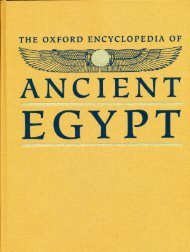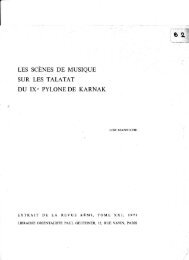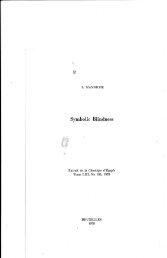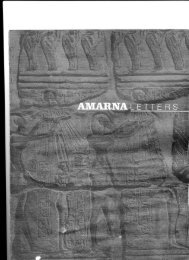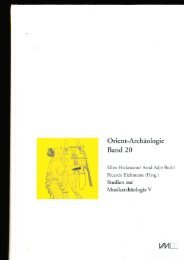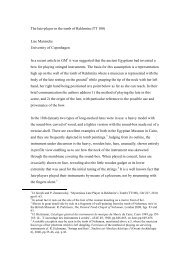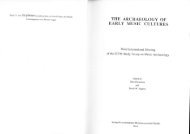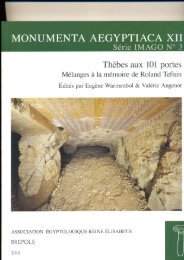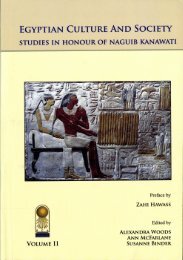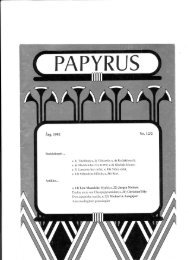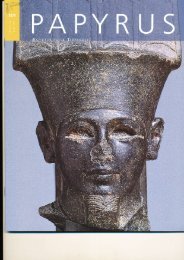Create successful ePaper yourself
Turn your PDF publications into a flip-book with our unique Google optimized e-Paper software.
MEMNONIA<br />
Amarna. As in those days perfume was not based on alcohol, but on oils or<br />
fats, a heavily anointed peison would also have been quite greasy_, and.this<br />
state of affaiis would leåve traces on his or her garments' The white linen<br />
would have dark stains where it was close to the body, as at the breasts,<br />
shoulders or knees. In order to show a true abundance of scent, the artist<br />
would place a whole lump of unguent on top of the heads or wigs of the^<br />
guests (cf. Pl. [). This hai in the past been interpreted as an actual cone of<br />
inguent, but there seems now to be some consensus (20)inregarding.it as a<br />
viJual aid, provided by the ancient artists to remind us of the odoriferous<br />
ambiance --the significance of which will be demonstrated below.<br />
ANALYSIS<br />
Apart from studying the recipes and overcoming lexicographical<br />
problems, the most obvious approach towards an assessment of ancient scent<br />
would be to carry out analyses of residue in perfume containers. Recent<br />
results of such anålyses of eye-paint in the Louvre gave surprising results, in<br />
that it proved that knowledge of chemistry was far more sophisticated,than<br />
had pr^eviously been believed. Similar work on scent, using all_available<br />
modårn technålogy, is curently being continued in laboratories in France ('').<br />
The most important find of all, the perfume from the tomb of<br />
Tutankhamun, was anålysed at the time of its discovery - but science has<br />
advanced somewhat since the 1920s! It has been estimated that about 350<br />
litres of scented oil and fat were buried with him. When the second wave of<br />
robbers entered his tomb shortly after his burial, they brought leather sacks<br />
to caffy it all away. Apparently they were interrupted, leaving the alabaster<br />
jars wiih their necks broken and their interiors showing fingerprints, where<br />
ihey had scooped out the contents. Nevertheless, a substantial amount of<br />
scent was left. Even today residue is clearly visible inside the jars as they are<br />
exhibited in the museum. The analysis of one jar with 450 g scent in it was<br />
not surprising: 87 .77o fatty matter, probably animal fa1, t!9 rest being "some<br />
balm oi resinl' (22). The scented substance from the tomb of Tutankhamun still<br />
gave a faint odour, which has been variously described as coconut or flowers<br />
of broom or valerian.<br />
One may compare this ancient analysis with another from the 1980s<br />
of a tiny sample of the tissue of the mummy of Ramess_es II, which through<br />
pollen ånalysis alone yielded a truly amazing glimps-e of ancient vegetatior :<br />
ihe royal mummy had apparently been anointed w-ith gamomile oil, and this<br />
.u-oåil" had grbwn in a field full of weeds, all of which were identified (")'<br />
I am convinced that the next major step forward in research on ancient



